Curious about how to embroider on toilet paper? It’s a creative trend that combines humor and skill, turning an everyday item into something truly unique. From quirky gifts to party decor, embroidered toilet paper is a fun way to surprise and delight.
If you’re new to this idea, don’t worry—it’s simpler than it sounds! This guide will take you step by step through the process, helping you avoid common mistakes and achieve flawless results. Ready to get started? Let’s transform ordinary toilet paper into a masterpiece!
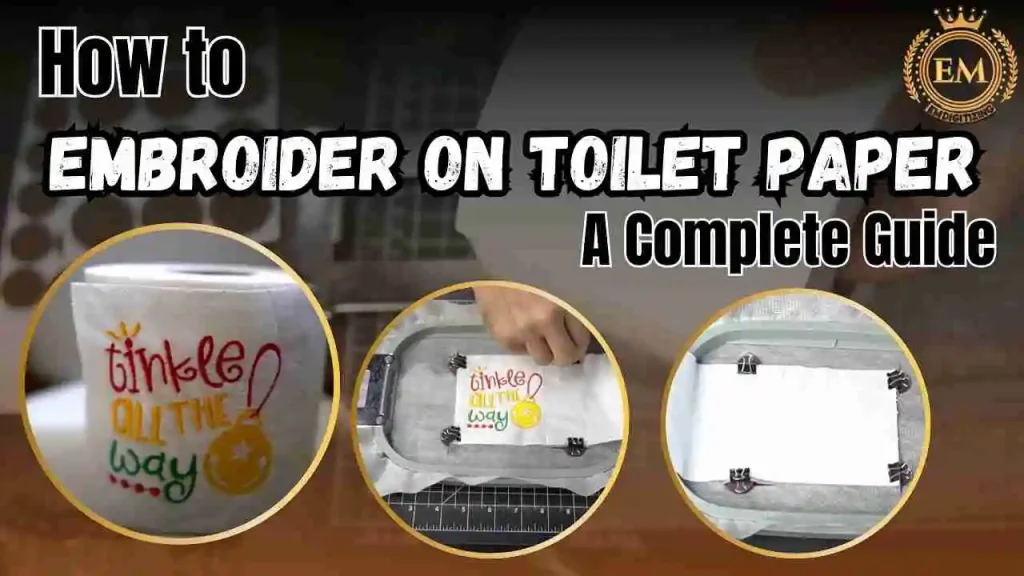
How to Embroider on Toilet Paper: A Complete Guide
Why Embroider on Toilet Paper?
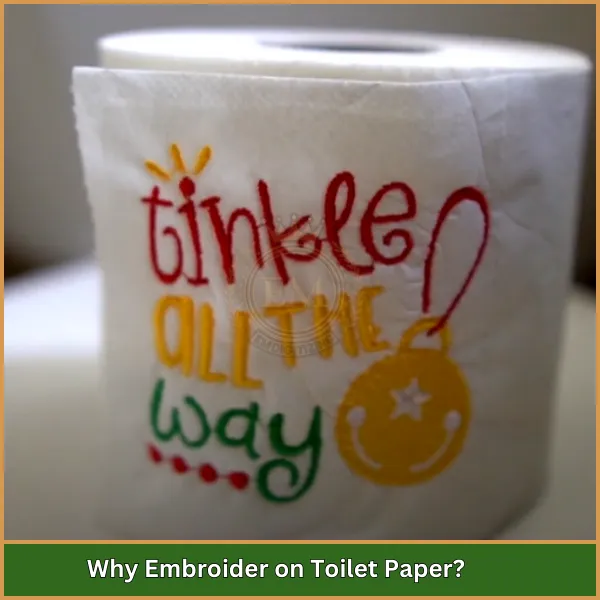
Embroidering on toilet paper may sound unconventional, but it has become a fun and creative trend in the embroidery world. This unique medium allows you to create quirky and personalized designs that make for memorable gifts or novelty items.
Whether for holidays, birthdays, or just as a humorous statement piece, embroidered toilet paper can bring a smile to anyone’s face. It’s also a fantastic way to showcase your embroidery skills in an unexpected way, making it a conversation starter.
Beyond humor, it can be a decorative touch for themed events or even serve as a unique branding opportunity for businesses. Embroidering on toilet paper is an exciting way to think outside the box and explore new possibilities in embroidery.
Materials Needed for Toilet Paper Embroidery
When learning how to embroider on toilet paper, it’s essential to gather the right materials to ensure success. Using the correct tools will help you achieve clean, professional designs on this delicate surface.
- Toilet paper (2-ply or more)
- Embroidery machine
- Tear-away stabilizer
- Temporary spray adhesive
- Embroidery thread
- Needle (size 75/11 or 80/12)
- Small scissors
- Ruler or measuring tape
1. Toilet Paper (2-Ply or More)
For embroidery, select the best toilet paper to embroider on, which should be 2-ply or higher. This ensures the paper is sturdy enough to withstand stitching without tearing. Premium-quality toilet paper with a smooth surface works best for detailed designs.
2. Embroidery Machine
An embroidery machine is essential for precise and consistent designs. Make sure the machine is set to handle delicate materials, and test it on a sample first to avoid any issues.
3. Tear-Away Stabilizer
Using a tear-away stabilizer is vital to support the fragile toilet paper during embroidery. It prevents the paper from puckering and ensures a smooth, even design.
4. Temporary Spray Adhesive
A temporary spray adhesive helps secure the toilet paper to the stabilizer. This prevents shifting during embroidery, ensuring the design remains properly aligned.
5. Embroidery Thread
Choose high-quality embroidery thread for vibrant and durable designs. Polyester threads are particularly suitable as they are strong and come in a wide variety of colors.
6. Needle (Size 75/11 or 80/12)
Use a small embroidery needle, such as size 75/11 or 80/12, to minimize the risk of tearing the toilet paper while stitching. A sharp needle will create clean holes for the thread.
7. Small Scissors
Sharp, small scissors are essential for trimming threads neatly without damaging the delicate paper. They also help in removing any stabilizer around the design.
8. Ruler or Measuring Tape
A ruler or measuring tape ensures precise placement of the design on the toilet paper. Proper alignment is key to achieving a professional look.
How to Embroider on Toilet Paper | Step-by-Step
Learning how to machine embroider on toilet paper can be a rewarding and fun way to showcase your embroidery skills. This step-by-step guide will help you create stunning designs on this unconventional medium while avoiding common pitfalls.
1. Choose the Right Toilet Paper
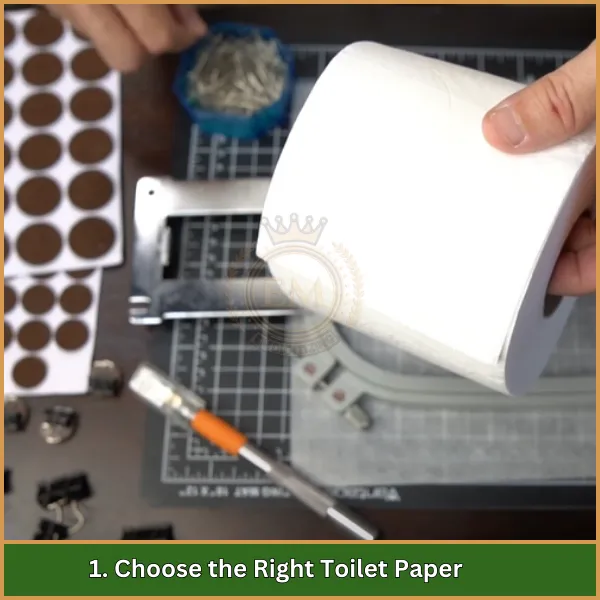
The type of toilet paper you use is crucial. Opt for 2-ply or higher toilet paper, as it provides the strength needed to hold the stitches without tearing. Premium-quality toilet paper with a smooth surface works best, as it ensures a cleaner and more detailed design. Avoid toilet paper with patterns or embossing, as they can interfere with the embroidery.
2. Prepare the Stabilizer

Stabilizer is essential for supporting the delicate toilet paper during the embroidery process. Cut a piece of tear-away stabilizer slightly larger than your embroidery hoop. This will help prevent the paper from puckering and provide a sturdy base for your design.
3. Layer the Toilet Paper
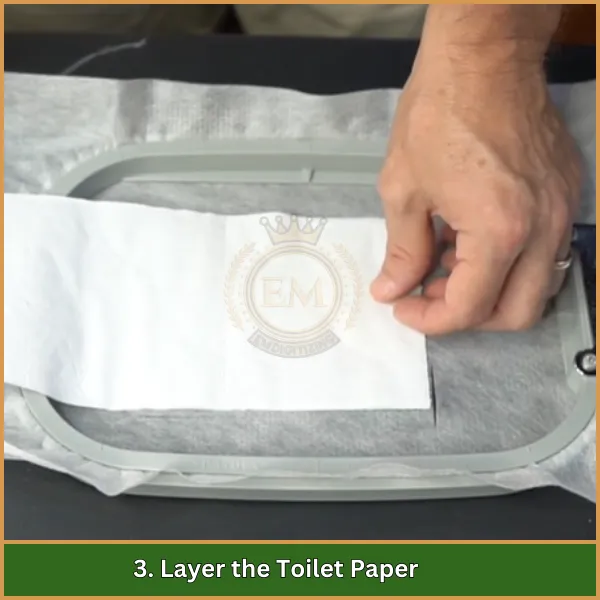
To strengthen the embroidery area, layer 3-4 sheets of toilet paper. Align the layers evenly to ensure the entire area is reinforced. These layers will help prevent the toilet paper from ripping during the stitching process.
4. Secure with Temporary Spray Adhesive

Apply a light mist of temporary spray adhesive to the stabilizer and carefully press the layers of toilet paper onto it. This step ensures the toilet paper stays in place during embroidery, reducing the risk of shifting or bunching.
5. Hoop the Toilet Paper and Stabilizer
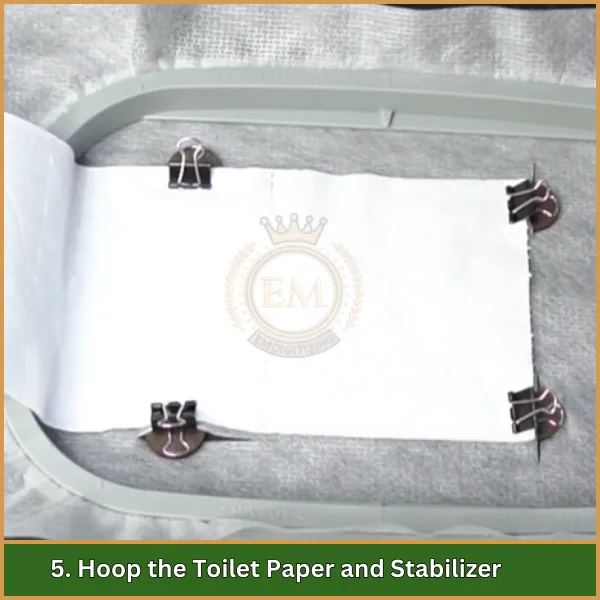
Place the stabilizer and toilet paper into the embroidery hoop. Be gentle to avoid ripping the paper. Ensure the area to be embroidered is taut and flat, as any slackness can lead to puckering or uneven stitches.
6. Select and Load the Design

Choose a simple and light design, as heavy or complex designs can tear the paper. Load the design onto your embroidery machine and position it correctly on the toilet paper.
If you need a custom design, EMdigitizing can digitize it for you! We ensure the design is perfect for toilet paper, so it won’t cause any damage during embroidery.
7. Adjust Machine Settings
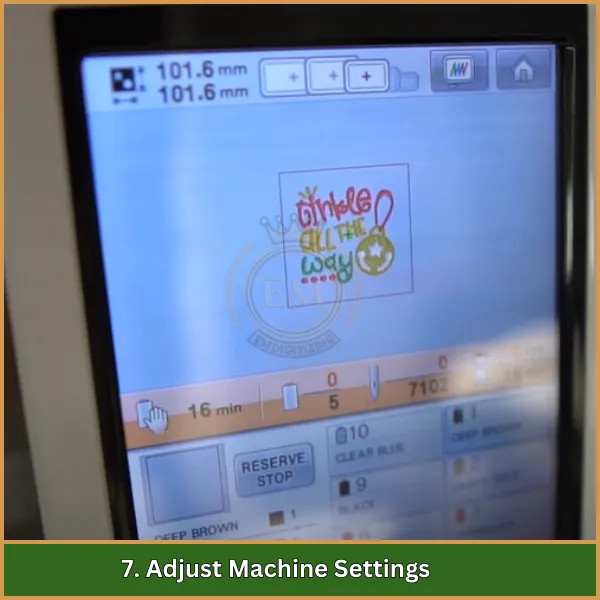
Set your embroidery machine to a slower speed to minimize the strain on the fragile material. Use a small needle, such as size 75/11 or 80/12, which creates smaller holes and reduces the chance of tearing the paper. Adjust the tension settings if necessary to ensure smooth stitching.
8. Start Embroidering
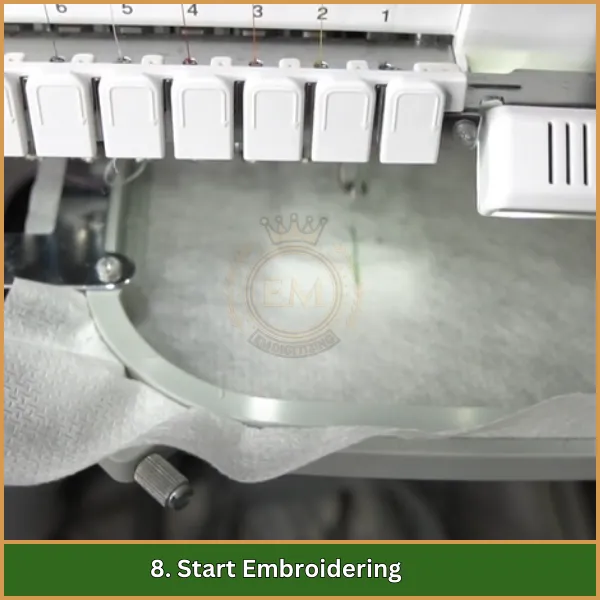
Begin the embroidery process slowly. Keep an eye on the machine to ensure the toilet paper doesn’t shift or tear. If the machine stops or if there’s excessive thread buildup, pause and make adjustments before continuing.
9. Remove the Stabilizer
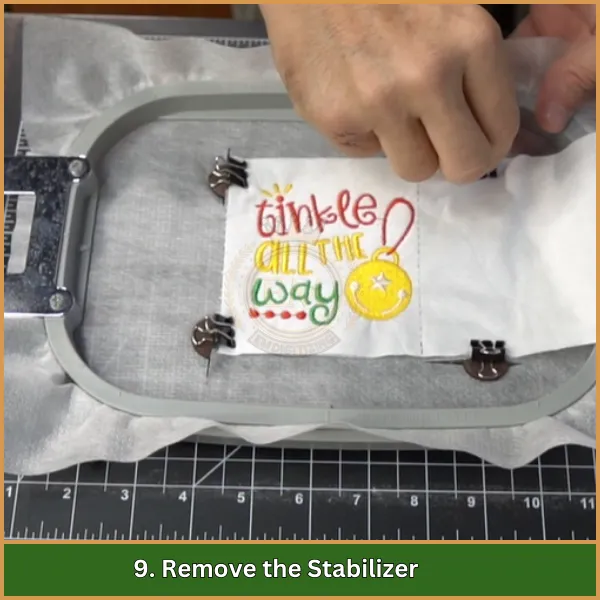
Once the embroidery is complete, gently remove the hoop and tear away the stabilizer from the back of the toilet paper. Be careful not to pull too hard, as this could damage the stitches or tear the paper.
10. Trim Excess Threads
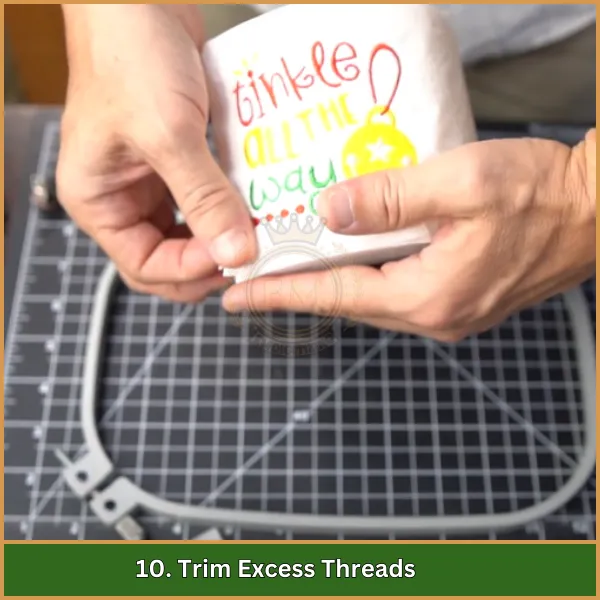
Use a pair of sharp, small scissors to carefully trim any loose threads around the design. This step gives your embroidered toilet paper a clean and professional finish.
Troubleshooting Common Issues While Embroidering on Toilet Paper
When learning how to embroider on toilet paper, you might face a few challenges. Here are the most common issues and how to solve them:
- Tearing During Embroidery: Use 2-ply or thicker toilet paper, and ensure it’s securely attached to a stabilizer with temporary spray adhesive to prevent tearing.
- Paper Shifting in the Hoop: Make sure the toilet paper and stabilizer are hooped tightly. Adding extra layers of toilet paper can also help reduce shifting.
- Puckering Around the Design: Check the tension settings on your embroidery machine and ensure the stabilizer is strong enough to hold the paper flat.
- Thread Breaking Frequently: Use a high-quality thread and a smaller needle (size 75/11 or 80/12). Adjust the machine speed to avoid extra strain on the thread.
- Design Too Dense for Paper: Choose light, simple designs. Dense stitches can easily tear the toilet paper or cause distortion.
- Stabilizer Difficult to Remove: Gently tear the stabilizer away while holding the paper firmly. Use a lighter tear-away stabilizer for easier removal.
Conclusion
Mastering how to embroider on toilet paper can turn an ordinary household item into a unique and eye-catching creation. With the right design and technique, you can make something truly memorable for gifts, events, or personal enjoyment.
Need a custom embroidery design? EMdigitizing is here to help! We offer top-quality digitizing services at unbeatable prices, with super-fast turnaround times and guaranteed precision. Plus, our preview option ensures you’re 100% satisfied with the design before it’s finalized. And here’s the best part—if it’s your first time with us, you’ll get 50% off your first order!
Ready to bring your creative ideas to life? Click here to get started with EMdigitizing today!
FAQs
Yes, people embroider on toilet paper, often as a fun and creative way to make novelty gifts or decorations for special occasions.
People embroider toilet paper to craft personalized gifts or add a humorous, artistic touch to an everyday item, making it more unique and memorable.
Apart from toilet paper, you can embroider on sturdy materials like cardstock or thick craft paper, which can handle the stitching without tearing.
The designs on embroidered toilet paper are typically for decoration, featuring themes like holidays, custom monograms, or playful motifs that bring joy and laughter.
